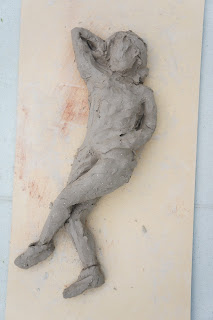- Clearing work space
- Moving furniture
- Putting the boards up
- Gum strip between the boards
- Using filler - covering scratches in the boards
- Sanding the filler and boards
- Painting
First island up and a booth set up for one of the students. We thought setting the boards in islands would make maximum use of the space. We had to use the space behind the boards to store the furniture.
Second Island




















































